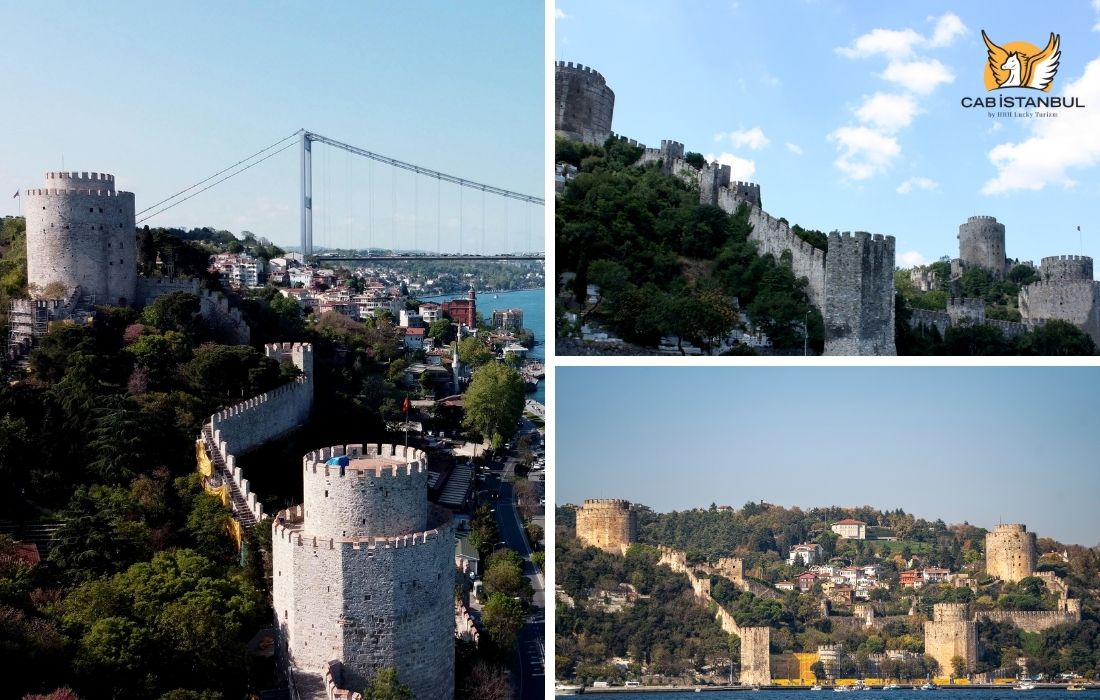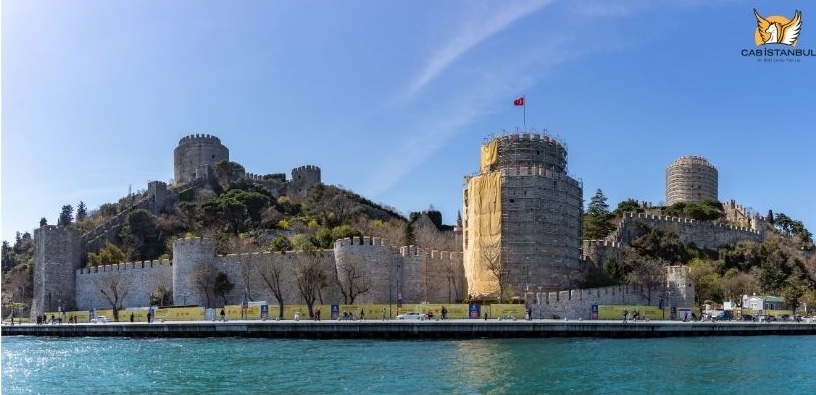Rumeli Fortress
2025-12-11

Rumeli Fortress is one of Istanbul's most iconic historical landmarks, perched on the European side of the Bosphorus Strait. Built in 1452 by Ottoman Sultan Mehmed II (Fatih Sultan Mehmet) as a strategic move before the Conquest of Constantinople, the Rumeli Fortress—also known as Bogazkesen Fortress—was designed to control naval traffic and cut off aid to the Byzantine Empire. Facing the Anadolu Fortress across the strait, it stands at the narrowest point of the Bosphorus, creating a chokehold on all seaborne movement.
The structure was completed in just four months, an astonishing feat of medieval engineering. Its three grand towers—Halil Pasha, Saruca Pasha, and Zaganos Pasha—along with 13 smaller towers, form a rugged silhouette against the backdrop of Istanbul’s skyline. These towers, built by the Sultan’s most trusted commanders, reflect the disciplined coordination of the Ottoman military and the architectural brilliance of the era.
Visitors to the Rumeli Fortress can walk along its massive stone walls, admire panoramic views of the Bosphorus Bridge, and explore the open-air theatre within. Once a defensive stronghold, the fortress is now part of the Hisarlar Museum and hosts cultural events, concerts, and historical exhibitions during summer months.
Located between the neighborhoods of Bebek and Emirgan, the Rumeli Fortress is surrounded by lush parks, cafes, and museums, making it a perfect stop for history lovers and sightseers alike. Whether you are exploring its silent corridors or photographing its ancient gates, the Rumeli Fortress offers a timeless experience that bridges Istanbul’s imperial past with its vibrant present.
We offer premium chauffeur-driven car rental and airport transfer services to historical sites like the Rumeli Fortress. Travel in comfort and style with professional drivers, on-time pickups, and fully-inclusive pricing—ideal for exploring Istanbul’s timeless heritage
Rumeli Castle
Rumeli Hisarı Fortress
Rumeli Fortress is strategically positioned on the European side of Istanbul, within the boundaries of the Sariyer district. Nestled between the neighborhoods of Bebek and Emirgan, it occupies the narrowest stretch of the Bosphorus Strait, a location that has historically enhanced its significance both militarily and visually.
Directly facing the Anadolu Fortress across the strait, Rumeli Hisari commands a vital point along the natural waterway connecting the Black Sea to the Sea of Marmara. This unique positioning made it an indispensable asset during the Ottoman conquest of Constantinople, allowing the empire to control all naval passage through the Bosphorus.
Today, the fortress is easily accessible via public transportation from key city centers such as Besiktas, Levent, Maslak, and Taksim. Visitors may also choose to arrive on foot, enjoying a scenic walk along the elegant Bebek shoreline, where waterfront cafés and lush landscapes frame the route to the historic site.
Beyond its strategic history, the location of Rumeli Fortress is equally admired for its natural charm. The panoramic Bosphorus views, set against the backdrop of towering stone walls and centuries-old architecture, create a visual experience reminiscent of a living postcard—captivating both history enthusiasts and casual travelers alike.
Construction of Rumeli Hisari
The construction of Rumeli Hisari marked one of the most critical prelude events to the Conquest of Constantinople. Commissioned by Ottoman Sultan Mehmed II in 1452, the Rumeli Fortress—also known as Bogazkesen Hisari—was strategically positioned on the narrowest point of the Bosphorus Strait, directly opposite the Anadolu Fortress on the Asian side.
The primary aim behind the construction of Rumeli Fortress was to block naval reinforcements from reaching Byzantium via the Black Sea. By controlling this chokepoint, the Ottoman Empire gained full dominance over the maritime route, isolating Constantinople and tightening the siege.
The Rumeli Fortress was built in an astonishingly short period of just four months—from April to August 1452. This rapid execution was made possible through meticulous planning, the mobilization of thousands of laborers, and the direct supervision of the Sultan himself. Each of the fortress's three major towers—Halil Pasha Tower, Saruca Pasha Tower, and Zaganos Pasha Tower—was constructed under the guidance of senior commanders, whose names they now bear.
The architecture of the Rumeli Fortress reflects the military genius of the time. Thick stone walls, strategically placed bastions, and angled designs were implemented to withstand both sea and land attacks. Local stone and timber were sourced from nearby villages, while master craftsmen from various parts of the empire collaborated on-site.
Rumelihisarı

Rumeli Hisari Museum
The Rumeli Hisari Museum is Istanbul’s most atmospheric heritage sites—an open-air museum nestled within the stone walls of the legendary Rumeli Fortress. Overlooking the Bosphorus, this unique location preserves centuries-old military relics, architecture, and natural scenery in an immersive outdoor setting.
Inside the Rumeli Hisari Museum, there are no traditional exhibit halls. Instead, history is on display beneath the open sky. Scattered throughout the fortress grounds are authentic Ottoman cannons, large stone cannonballs, and sections of the famed Golden Horn chain, believed to have blocked invading ships during the Conquest of Constantinople. These artifacts speak volumes about the fortress’s role in controlling the Bosphorus Strait.
The museum grounds are dominated by the three main towers—Halil Pasha, Saruca Pasha, and Zaganos Pasha. While the interiors of these towers are not open to the public, their exteriors stand tall as symbols of Ottoman engineering. Alongside the towers, visitors can view original gate structures, bastions, and stretches of fortification walls that once served as Istanbul’s northern defense line.
Natural beauty also enhances the museum experience. The inner courtyards feature pine trees, wild herbs, and scenic pathways, offering a peaceful contrast to the stone military architecture. From nearly every point in the fortress, you can enjoy panoramic views of the Bosphorus and the opposite shore, including Anadolu Hisari.
Legend of Rumeli Fortress
The Guardian in the Night: The Seal of Hızır: When preparations began for the construction of Rumeli Fortress, Sultan Mehmed the Conqueror had a single prayer in his heart:
"O Lord, may this fortress be protected not only by stone, but also by Your grace."
It is said that his plea was carried by the winds of the Bosphorus, all the way to the ears of Hızır Aleyhisselam.
That very night, Hızır (peace be upon him) appeared on the shores of the Bosphorus, dressed in radiant white. Before construction even began, he entered the Sultan’s dream and whispered:
"If this fortress is to stand as a symbol of justice and a refuge for the oppressed, I shall keep watch over it by night. But only on one condition… If I am ever forgotten, the fortress shall be left unguarded."
The next morning, Sultan Mehmed ordered a green seal to be placed beneath the cornerstone of the fortress. That seal, it is believed, was the mark of Hızır. No one dared move that stone during construction. Laborers swore they saw a white figure walking the walls just before dawn, touching the stones and vanishing into the mist. Many believed Hızır himself laid that stone with his own hands.
Over the centuries, Rumeli Fortress endured wars, invasions, and neglect—but never crumbled. For Hızır, they say, remained. Yet, when injustice, arrogance, or ingratitude crept within its walls, a strange murmur would rise from the stones. This was Hızır’s gentle warning:
"You may have forgotten me, but I am still watching you."
Even today, if you gaze upon the fortress walls in the silence of night, you might catch a glimpse of a pale figure in white. And when someone stands before the fortress and offers a sincere prayer, a breeze often stirs across the Bosphorus, carrying with it a soft whisper:
"I am here."

Write a Comment !